GRADUATE RESEARCH
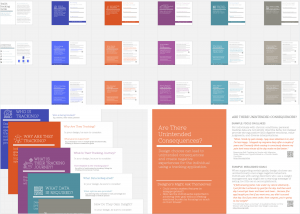 Supporting the Design Process of Health Tracking Applications
Supporting the Design Process of Health Tracking Applications
Designers have to make various design decisions when building a new health tracking system, but might not always be fully aware of important consideration or implications. These cards are aimed to provide a series of prompts and examples which can guide designers and researchers through that design process. By identifying potential blindspots, raising awareness to unintended consequences and harms, or becoming aware of limitations of proposed designs, designers and researchers are encouraged to reflect on potential consequences of design decisions. I am currently conducting interviews with students working in design projects related to health tracking as well as designers and researchers in industry who are working on health tracking applications.
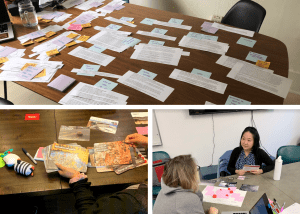 Decision-Making Experiences of Parents of Young Children
Decision-Making Experiences of Parents of Young Children
Making decisions demands a considerable amount of work that often goes unnoticed while also coping with other demands of early parenting. There is an opportunity for designers and researchers of interactive technologies to explore ways to provide decision support to parents and families based on their lived experiences. To investigate parents’ decision support needs, I surveyed 65 parents and interviewed 12 parents of children aged 0-5 in the U.S. The results of this study provide an analysis of parents’ experiences and needs when using different resources to make health and wellbeing decisions for their child; a definition of parents’ lived experiences with intuition throughout the decision-making process; and a discussion of tensions and opportunities for designing in this sensitive space.
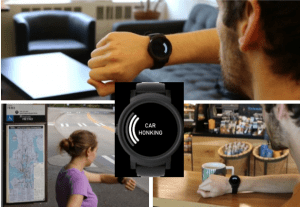 Evaluating Smartwatch-based Sound Feedback for Deaf and Hard-of-hearing Users Across Contexts
Evaluating Smartwatch-based Sound Feedback for Deaf and Hard-of-hearing Users Across Contexts
In this research project, we explored the opportunity to use haptic and visual feedback from a smartwatch to support non-speech sound awareness for deaf and hard-of-hearing individuals in complex soundscapes. To address this question, I designed a study protocol for a three-part study conducted with 16 DHH participants: (1) a Wizard-of-Oz evaluation of a smartwatch prototype comparing three designs that offer visual feedback plus different levels of vibrational feedback, and exploring haptic and visual techniques to portray three sound characteristics (loudness, direction, and identity); (2) an in situ experience (see picture) where participants visited three locations (café, bus stop, student lounge) and used the watch to receive a preset sequence of sounds typical of the location; (3) a semi- structured interview covering the user’s overall experience, the feedback design, sound filtering options, and possible issues of privacy and social acceptability.
CLASS PROJECTS
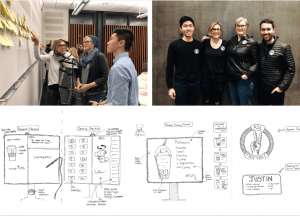 HCDE 518: User-Centered Design
HCDE 518: User-Centered Design
Ordering without Limits – Developing alternative communication methods for the deaf and hard-of-hearing in customer service interactions
Team members: Dawn Ferguson, Jeff Matarrese, Kent Tsai, Susanne Kirchner
Navigating the world as a person who is deaf or hard of hearing (DHH) can be stressful. Customer service interactions in particular can lead to anxiety, frustration, and feelings of isolation from hearing staff. Through an iterative design process and rapid prototyping, we sought to find technology-based design solutions to help members of the DHH community communicate more effectively in customer service interactions.
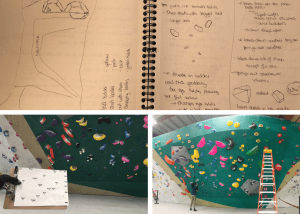 HCDE 545 – Qualitative Methods
HCDE 545 – Qualitative Methods
Go with the Flow – Teaching and Learning in Climbing
Team members: Kenya Mejia, Joshua Vasques, Burren Peil, Susanne Kirchner
Field site: Momentum Climbing Seattle
Bouldering gyms draw together communities of climbers that span a wide range of both age and skill level. Within this setting, climber-to-climber interaction is inevitable, as routes of various difficulties are tightly patterned into the same walls. With a rich intermingling of people of various skill level, we were interested in uncovering specific practices that create a means by which climbers mature into the sport in an indoor setting. In order to address this question, we chose a grounded-theory approach based on observing setters in their process of creating routes at a local bouldering gym from beginning to end as well as climbers who are engaging with these routes thereafter. Additionally, we conducted interviews with both climbers and setters about their experience with climbing in general and the gym.